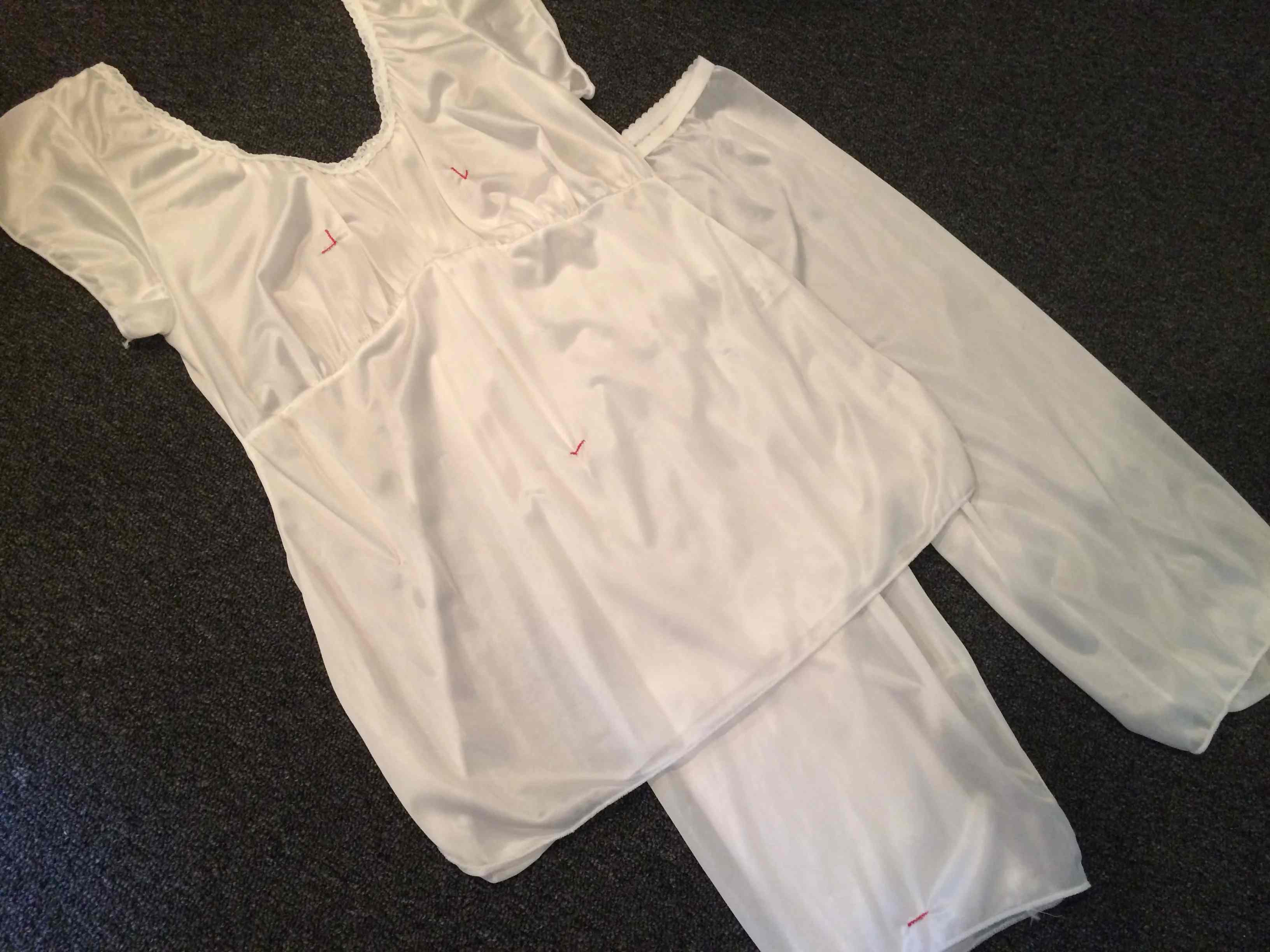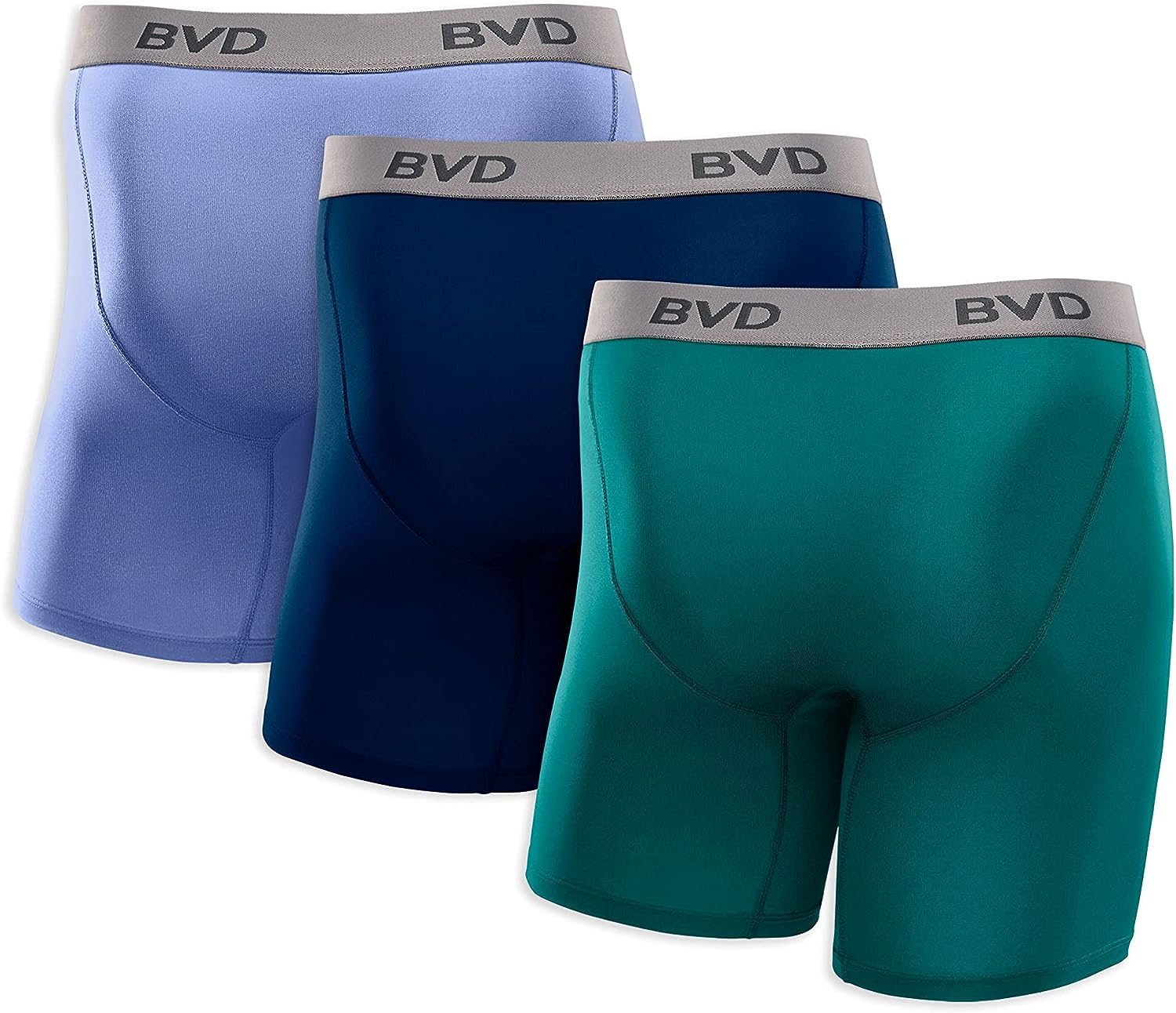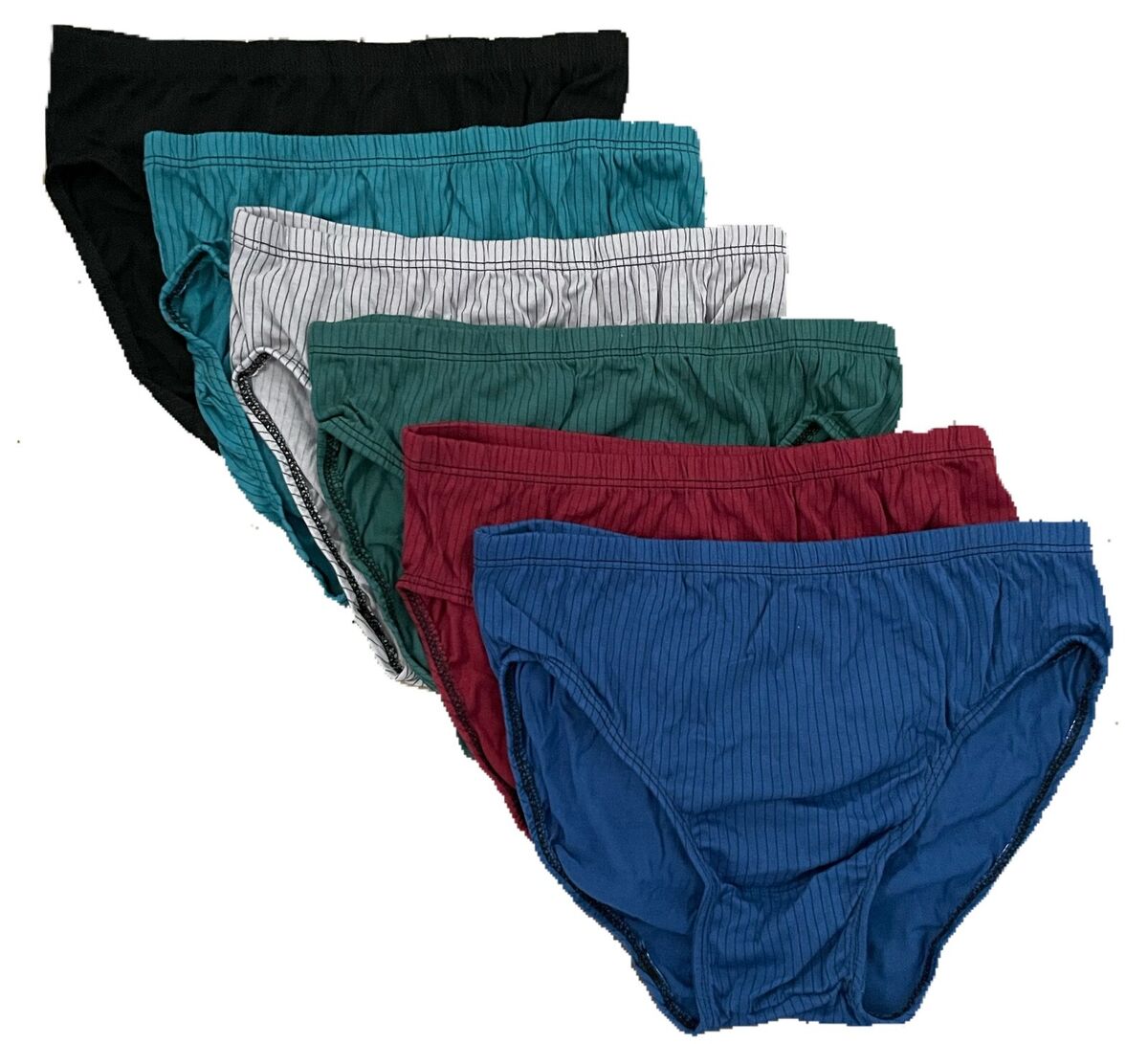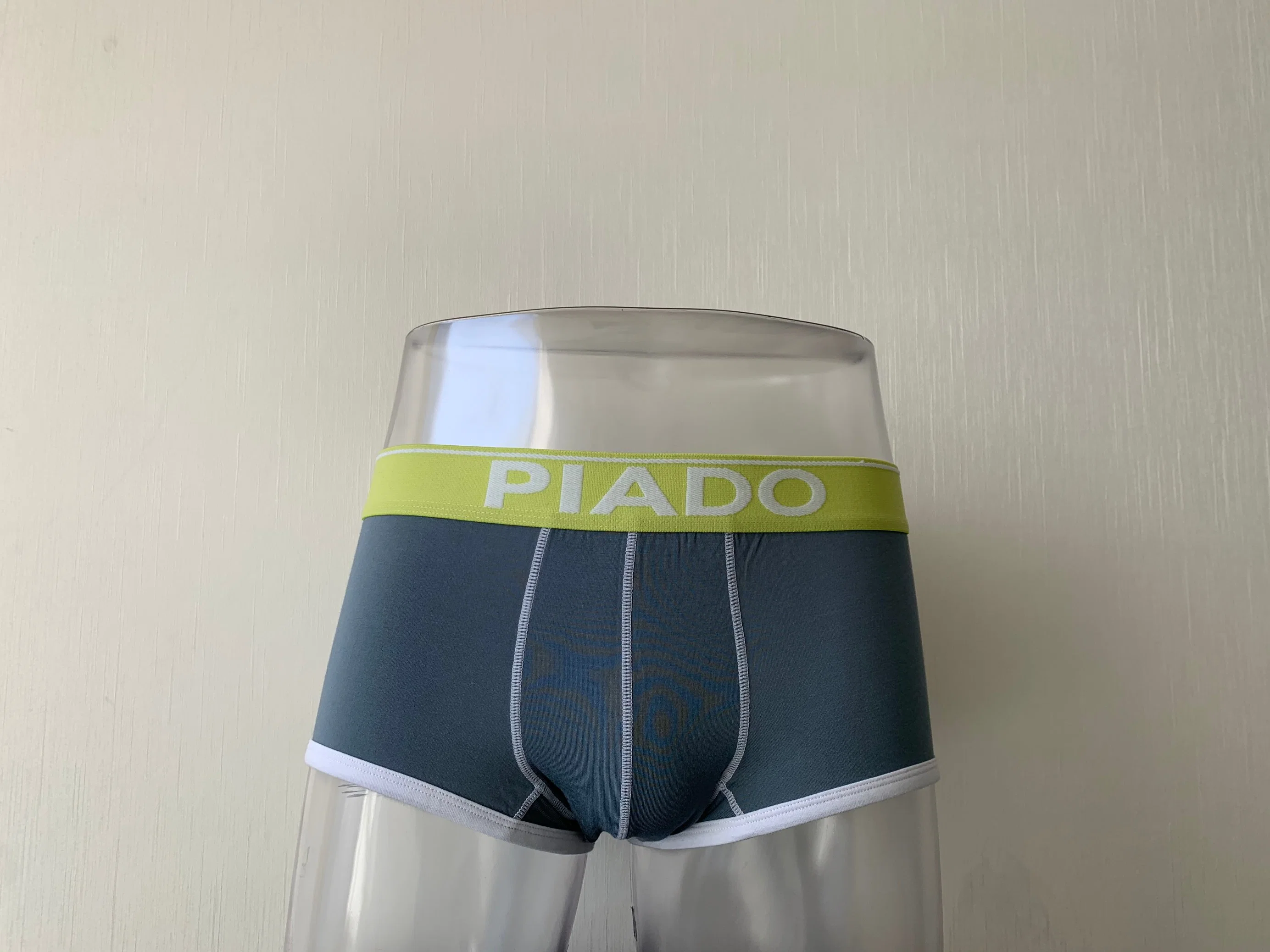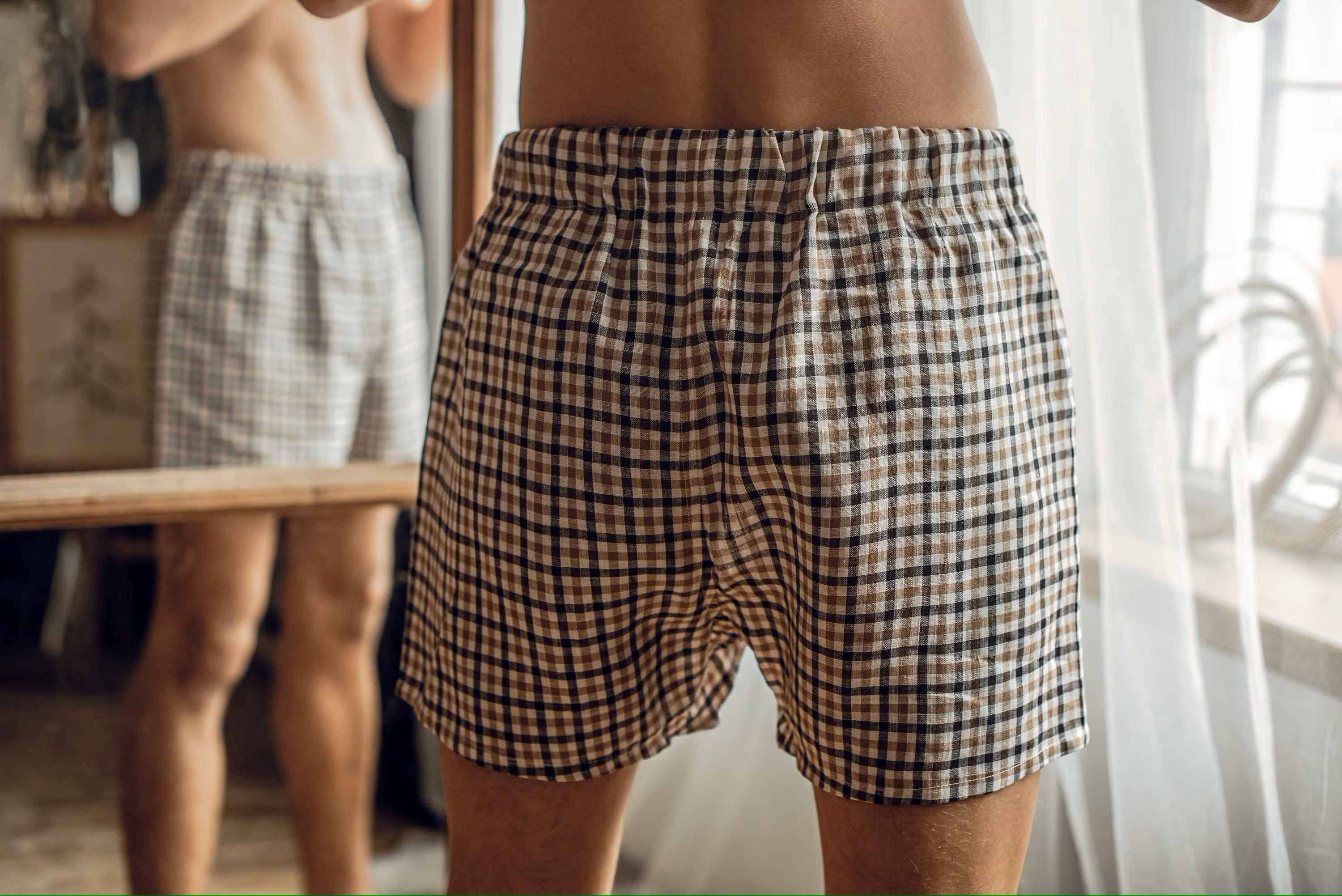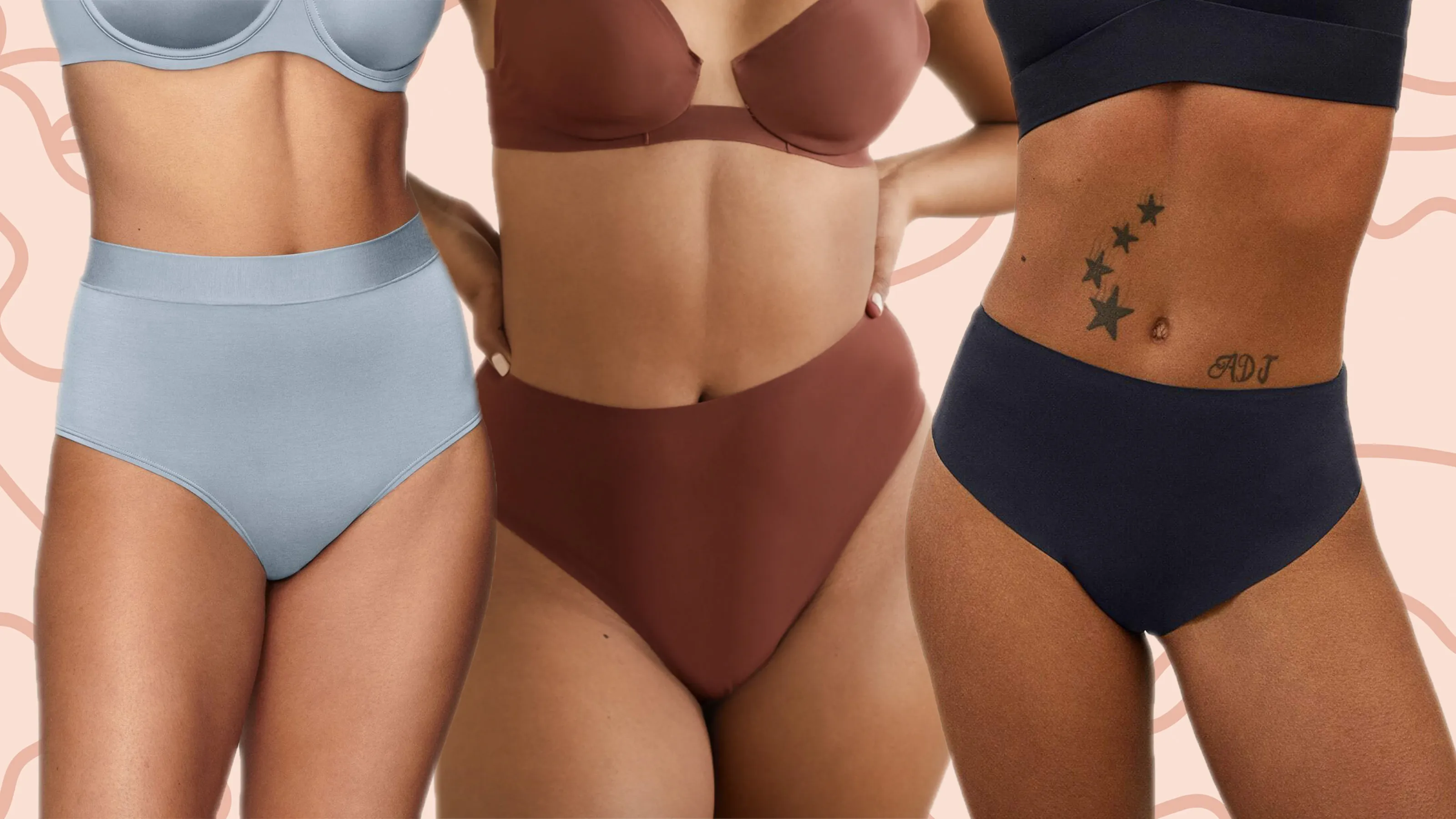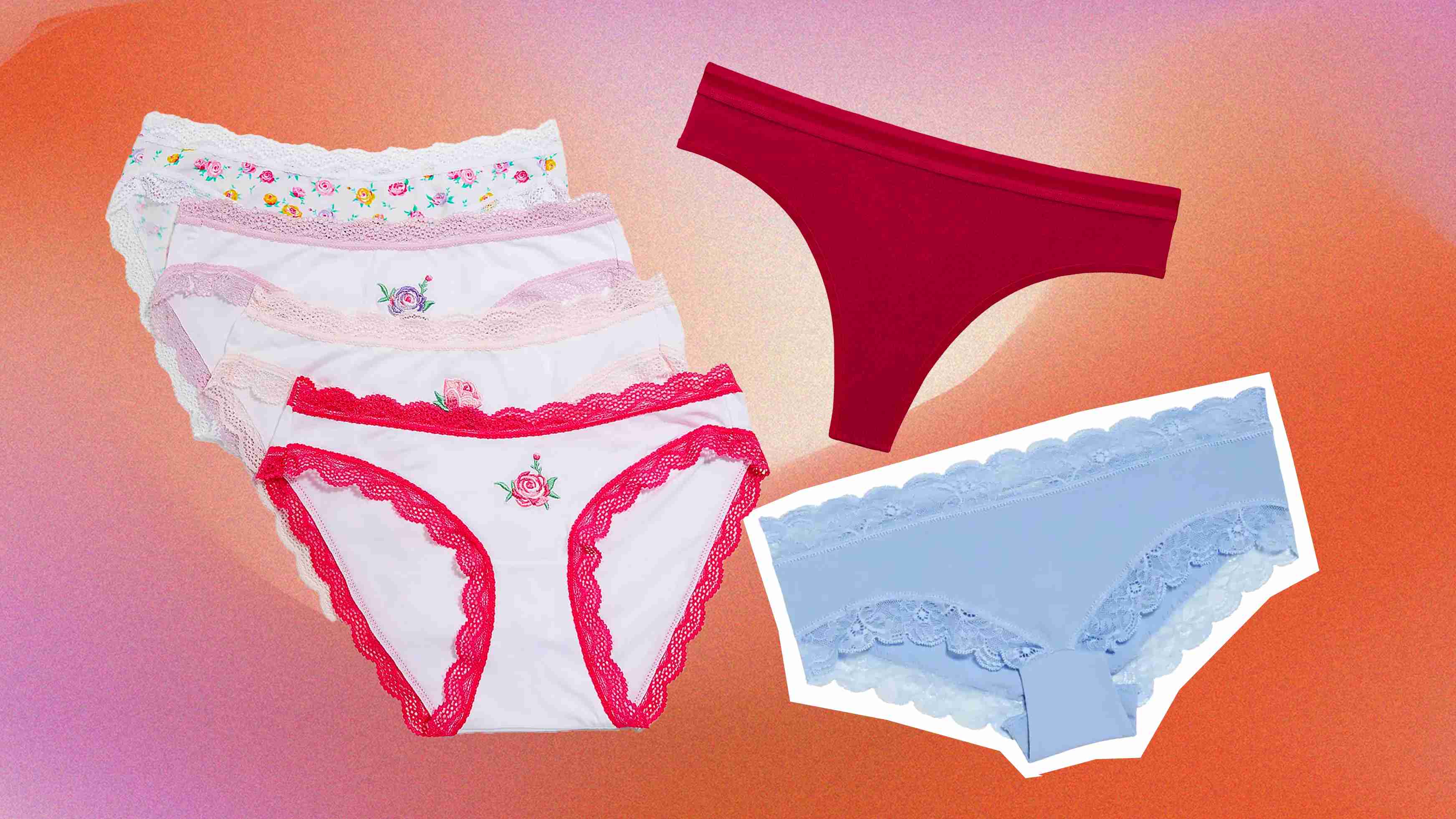Home>Buying Guides>What Are Adaptive Underwear


Buying Guides
What Are Adaptive Underwear
Modified: August 2, 2023
Discover the comfort and convenience of adaptive underwear for incontinence. Stay dry and confident with our top-quality, discreet solutions. Find your perfect fit today.
(Many of the links in this article redirect to a specific reviewed product. Your purchase of these products through affiliate links helps to generate commission for Under-tec.com, at no extra cost. Learn more)
Table of Contents
Introduction
Dealing with incontinence can be a challenging and sometimes embarrassing condition that affects millions of people around the world. Whether caused by age, medical conditions, or other factors, managing the symptoms of incontinence requires finding the right solutions that offer comfort, confidence, and convenience. One such solution is adaptive underwear.
Adaptive underwear is specifically designed to meet the unique needs of individuals with incontinence. It provides additional support, protection, and comfort to help manage and contain any bladder or bowel leaks. This type of underwear offers a discreet and practical way to improve the quality of life for those dealing with incontinence.
Adaptive underwear goes beyond regular underwear by incorporating specialized features that address the specific challenges faced by individuals with incontinence. These features can include absorbent layers, moisture-wicking materials, odor control properties, and adjustable closures. By offering these benefits, adaptive underwear helps individuals regain their confidence and maintain an active lifestyle without constantly worrying about leaks or accidents.
In addition to the functional benefits, adaptive underwear also focuses on comfort and style. Manufacturers understand the importance of providing underwear that feels good against the skin and looks like regular underwear, allowing individuals to feel comfortable and confident throughout the day. With a variety of styles and designs available, adaptive underwear can cater to different preferences and personal styles.
Whether you or a loved one is dealing with incontinence, finding the right adaptive underwear can make a significant difference in managing the condition. It is essential to understand the various options available and how they can meet specific needs. In the following sections, we will explore in more detail what adaptive underwear is, its benefits, features to look for, different types available, and tips for choosing and caring for adaptive underwear.
What is Adaptive Underwear
Adaptive underwear, also known as incontinence underwear or adult diapers, is specifically designed to cater to the needs of individuals dealing with incontinence. It is designed to provide extra protection, comfort, and discretion, allowing individuals to manage their symptoms more effectively.
Unlike regular underwear, adaptive underwear incorporates various features that help contain bladder or bowel leaks. These features can include multiple layers of absorbent materials, such as cotton, microfiber, or bamboo, which are capable of trapping and locking in moisture. By doing so, adaptive underwear helps prevent leaks from reaching clothing or furniture, giving the wearer peace of mind.
Another important feature of adaptive underwear is its moisture-wicking capabilities. The specialized fabrics used in its construction pull moisture away from the skin, keeping the wearer dry and reducing the risk of skin irritation or discomfort. Additionally, many adaptive underwear options have odor control properties, neutralizing unpleasant smells and providing a fresh feeling throughout the day.
One of the key advantages of adaptive underwear is its discreet design. It is often designed to resemble regular underwear, with a more form-fitting and comfortable shape. The discreet design allows individuals to maintain their dignity and confidence, as others may not even realize they are wearing adaptive underwear.
Adaptive underwear comes in different styles to suit the needs and preferences of individuals. Some options resemble traditional briefs, while others may have a more feminine or masculine design. The variety in styles ensures that individuals can find the underwear that best fits their personal taste, while still providing the necessary functionality.
It’s important to note that adaptive underwear is available in different absorbency levels to meet the varying needs of individuals with incontinence. Some options are suitable for light leakage, while others offer maximum absorption for heavy incontinence. It’s crucial to choose the right absorbency level based on individual needs to ensure proper protection.
In summary, adaptive underwear is a specialized form of underwear designed to provide comfort, protection, and discretion for individuals dealing with incontinence. Its absorbent layers, moisture-wicking properties, odor control, and discreet design make it a practical and reliable solution. By wearing adaptive underwear, individuals can regain their confidence, maintain an active lifestyle, and effectively manage their incontinence symptoms.
Benefits of Adaptive Underwear
Adaptive underwear offers a range of benefits that make it a valuable solution for individuals dealing with incontinence. These benefits go beyond traditional underwear and provide comfort, confidence, and convenience. Here are some of the key advantages of using adaptive underwear:
- Improved Protection: Adaptive underwear is specifically designed to provide superior protection against leaks. With its absorbent layers and moisture-wicking properties, it ensures that any bladder or bowel leaks are contained, keeping clothing and furniture dry.
- Enhanced Comfort: The materials used in adaptive underwear are chosen for their softness, breathability, and comfort. They are gentle against the skin and reduce the risk of irritation or discomfort, allowing individuals to feel more at ease throughout the day.
- Discreet Design: Adaptive underwear is designed to look and feel like regular underwear, providing a discreet solution for individuals with incontinence. The form-fitting design and discreet packaging allow individuals to maintain their privacy and dignity.
- Odor Control: Many adaptive underwear options incorporate odor control properties, neutralizing and minimizing unpleasant smells. This feature helps individuals feel fresh and confident, even in social situations.
- Flexible Sizing: Adaptive underwear comes in a variety of sizes, ensuring a proper and comfortable fit for individuals of different body types. The availability of different sizes allows for a customized fit, enhancing overall comfort and effectiveness.
- Active Lifestyle: With the right adaptive underwear, individuals with incontinence can maintain an active lifestyle without constantly worrying about leaks or accidents. The added protection and discretion enable them to participate in daily activities, exercise, and socialize with confidence.
- Easy to Use: Adaptive underwear is designed for convenience and ease of use. It often features adjustable closures or tear-away sides, making it simple to put on and remove, especially for individuals with limited mobility or those who require assistance.
- Economical Option: In the long run, investing in adaptive underwear can be more cost-effective than constantly purchasing disposable pads or adult diapers. Adaptive underwear is reusable and can withstand multiple washes, providing a sustainable and budget-friendly solution.
By choosing adaptive underwear, individuals can experience these benefits, improving their quality of life and helping them manage their incontinence with confidence and comfort.
Features of Adaptive Underwear
Adaptive underwear is designed with several features that make it an effective solution for managing incontinence. These features focus on providing comfort, protection, and ease of use. Here are some of the key features to look for when selecting adaptive underwear:
- Absorbent Layers: Adaptive underwear is equipped with multiple layers of absorbent materials, such as cotton, microfiber, or bamboo. These layers effectively trap and lock moisture, keeping the skin dry and preventing leaks.
- Moisture-Wicking Properties: The materials used in adaptive underwear have moisture-wicking capabilities. They pull moisture away from the skin, keeping the wearer dry and comfortable throughout the day.
- Odor Control: Many adaptive underwear options include odor control properties. These features help neutralize and minimize unwanted odors, ensuring a fresh feeling and maintaining discretion.
- Discreet Design: Adaptive underwear is designed to resemble regular underwear, with a form-fitting and comfortable shape. This discreet design allows individuals to feel more confident and maintain their dignity, as others may not even realize they are wearing adaptive underwear.
- Adjustable Closures: Some adaptive underwear options feature adjustable closures, such as hook and loop fasteners or snaps. These closures allow for a customized fit and make it easier to put on and remove the underwear, especially for individuals with limited mobility.
- Elastic Waistband: Adaptive underwear often includes an elastic waistband, providing a secure and comfortable fit. The elastic waistband helps prevent the underwear from shifting or slipping, ensuring maximum effectiveness.
- Tagless Design: To minimize irritation and discomfort, adaptive underwear may have a tagless design. This feature eliminates tags that can cause skin irritation and allows for a smoother and more comfortable wearing experience.
- Machine Washable: Most adaptive underwear is machine washable, making it easy to clean and reuse. It is important to follow the manufacturer’s care instructions to maintain the quality and durability of the underwear.
- Variety of Styles: Adaptive underwear is available in various styles to cater to different preferences and needs. Some options resemble traditional briefs, while others may have a more feminine or masculine design, offering choices suitable for different individuals.
These features ensure that adaptive underwear provides the necessary comfort, protection, and convenience for individuals with incontinence. When selecting adaptive underwear, considering these features will help in finding the most suitable option to meet individual needs.
Types of Adaptive Underwear
There are several types of adaptive underwear available, each offering unique features and benefits to meet the varying needs of individuals with incontinence. Understanding the different types can help individuals make an informed decision when selecting the most appropriate option. Here are some common types of adaptive underwear:
- Briefs: Briefs are a classic style of adaptive underwear that offer full coverage and support. They resemble traditional underwear and provide reliable protection, comfort, and discretion.
- Boxer Briefs: Boxer briefs combine the longer leg length of boxers with the fit and support of briefs. This style is popular among men due to its comfort, flexibility, and closer-to-body fit.
- Pull-On Underwear: Pull-on underwear, also known as pull-ups, are similar to regular underwear and are worn by pulling them up like pants. They often have an elastic waistband for a secure fit and are easy to put on and take off.
- Mesh Pants: Mesh pants are worn over disposable or reusable pads and provide an additional layer of security and support. They are lightweight, breathable, and help keep the pad in place.
- Belted Undergarments: Belted undergarments consist of a reusable cloth pad that attaches to a belt or waistband. This option allows for easy changing and adjusting the level of absorbency as needed.
- Incontinence Briefs with Side Snaps: These briefs feature side snaps or tear-away sides, allowing for quick and convenient removal without fully undressing. They are particularly useful for individuals who require assistance with dressing or changing.
It’s important to consider factors such as absorbency level, ease of use, and personal preferences when choosing the type of adaptive underwear. Every individual has unique needs, and selecting the right type ensures optimal comfort, protection, and functionality.
How to Choose Adaptive Underwear
Choosing the right adaptive underwear is essential to ensure comfort, protection, and effectiveness for individuals dealing with incontinence. Considering the following factors can help in making an informed decision:
- Absorbency Level: Determine the level of absorbency needed based on the severity of incontinence. Options range from light to heavy, so choose the absorbency level that provides adequate protection without unnecessary bulk or discomfort.
- Size and Fit: Ensure the adaptive underwear fits properly by referring to the manufacturer’s size chart. A snug and secure fit is essential for optimal protection and comfort. Consider measuring the waist and hips to find the appropriate size.
- Material and Comfort: Look for adaptive underwear made from soft, breathable, and hypoallergenic materials. Comfort is crucial, as it helps prevent skin irritation and discomfort, especially for individuals with sensitive skin.
- Features and Functionality: Consider the specific features that will enhance comfort and convenience. This may include moisture-wicking properties, odor control, adjustable closures, or tear-away sides. Choose the features that align with individual needs and preferences.
- Style and Design: Consider the style and design of the adaptive underwear, as this can impact confidence and self-esteem. Choose a style that matches personal preferences and provides a discreet appearance.
- Ease of Use: Depending on individual abilities and mobility, consider the ease of putting on and removing the adaptive underwear. Adjustable closures or tear-away sides can be helpful for individuals who require assistance or have limited dexterity.
- Reviews and Recommendations: Read reviews and seek recommendations from healthcare professionals, online communities, or support groups. Hearing about others’ experiences can offer valuable insights and help in selecting the most suitable adaptive underwear.
- Price and Budget: Consider the price and determine the budget before making a purchase. Compare options from different brands and consider the long-term cost-effectiveness of reusable underwear versus disposable options.
By considering these factors, individuals can choose adaptive underwear that meets their specific needs, preferences, and budget. It’s important to remember that finding the right underwear may involve some trial and error, but the end result will provide comfort, confidence, and improved management of incontinence.
Tips for Caring for Adaptive Underwear
Proper care and maintenance of adaptive underwear are essential for ensuring longevity, hygiene, and effectiveness. Consider the following tips to care for adaptive underwear:
- Follow Manufacturer’s Instructions: Read and follow the care instructions provided by the manufacturer. This will include information on washing temperature, recommended detergents, and any specific instructions for drying or ironing.
- Pre-Rinse or Pre-Soak: If the adaptive underwear is heavily soiled, consider pre-rinsing or pre-soaking it before washing. This can help remove any stains or odors and improve the overall cleanliness.
- Use Gentle Detergent: Opt for a mild, non-irritating detergent when washing adaptive underwear. Harsh chemicals or fragrances can cause skin irritation or compromise the fabric’s absorbency.
- Avoid Fabric Softeners: Fabric softeners can leave a residue on the fabric and reduce the absorbency of adaptive underwear. It is best to avoid using fabric softeners or dryer sheets when caring for these garments.
- Machine Wash: Most adaptive underwear is machine washable. Use a gentle cycle and choose a water temperature according to the instructions. Turning the underwear inside out can help protect the fabric and maintain its quality.
- Drying: Ideally, air-drying is recommended for adaptive underwear to preserve the integrity of the fabric and elastic. However, if using a dryer, choose a low heat setting to prevent excessive shrinkage or damage.
- Inspect for Damage: Regularly inspect adaptive underwear for any signs of damage, such as loose stitching or elastic. If any issues are found, consider replacing the garment to ensure optimal performance.
- Keep an Adequate Supply: It is essential to have an adequate supply of adaptive underwear to ensure consistent usage while some pairs are being cleaned. This ensures that individuals always have clean and dry underwear available when needed.
- Replace as Needed: Over time, the absorbency and effectiveness of adaptive underwear may diminish. Pay attention to signs of wear and tear and replace the underwear as needed to maintain desired protection and comfort.
By following these care tips, individuals can keep their adaptive underwear clean, comfortable, and in good condition for long-term use. This will contribute to better hygiene, prolong the lifespan of the garments, and ensure maximum benefits for managing incontinence.
Where to Buy Adaptive Underwear
There are several places where individuals can purchase adaptive underwear to meet their specific needs. Here are some common options:
- Medical Supply Stores: Local medical supply stores often carry a range of adaptive underwear options. These stores specialize in providing medical equipment and supplies, including incontinence products.
- Pharmacies: Many pharmacies carry a variety of adaptive underwear brands and styles. These establishments may have a dedicated section for incontinence products or can order specific items upon request.
- Specialty Online Retailers: There are numerous online retailers that specifically cater to individuals with incontinence. These online stores offer a wide selection of adaptive underwear in various styles, sizes, and absorbency levels, making it easier to find the most suitable option.
- E-commerce Platforms: Popular e-commerce platforms such as Amazon, Walmart, Target, and eBay also have a vast selection of adaptive underwear available for purchase. These platforms offer the convenience of browsing and buying from the comfort of home.
- Manufacturer Websites: Many adaptive underwear manufacturers have their own websites where consumers can directly purchase their products. This can be a useful option to access specific brands and explore their full range of offerings.
- Healthcare Providers: Healthcare providers, such as nurses, home healthcare agencies, or medical clinics, may have recommendations or supplies of adaptive underwear available for purchase. Consulting with a healthcare professional can provide valuable insights and guidance in finding suitable options.
When purchasing adaptive underwear, it’s important to compare prices, read product descriptions, and consider customer reviews. Additionally, it’s advisable to check for any available insurance coverage or reimbursement options for incontinence supplies.
Ultimately, the choice of where to buy adaptive underwear depends on individual preferences, convenience, and accessibility. By exploring these options, individuals can find the most suitable retailer or platform to purchase the adaptive underwear that fits their needs and requirements.
Conclusion
Adaptive underwear serves as a practical and reliable solution for individuals dealing with incontinence. Its specialized design and features provide comfort, protection, and discretion, allowing individuals to manage their symptoms with confidence and dignity.
By understanding the various types and features of adaptive underwear, individuals can make informed choices to meet their specific needs and preferences. Selecting the right absorbency level, size, material, and style is crucial in ensuring maximum comfort and effectiveness.
Caring for adaptive underwear by following manufacturer’s instructions and practicing proper hygiene is important for maintaining its quality, longevity, and optimal performance. Regular inspection and replacement of worn-out garments are essential for consistent protection.
When it comes to purchasing adaptive underwear, there are multiple options available. From local medical supply stores and pharmacies to online retailers and manufacturer websites, individuals have a range of sources to choose from. Comparing prices, reading reviews, and considering personal preferences can help in finding the most suitable retailer or platform.
In conclusion, adaptive underwear is a valuable asset for individuals dealing with incontinence. Its benefits, features, and availability make it a practical and reliable solution for managing symptoms and improving quality of life. By choosing the right adaptive underwear and following proper care guidelines, individuals can regain confidence, maintain comfort, and continue living an active and fulfilling lifestyle.
